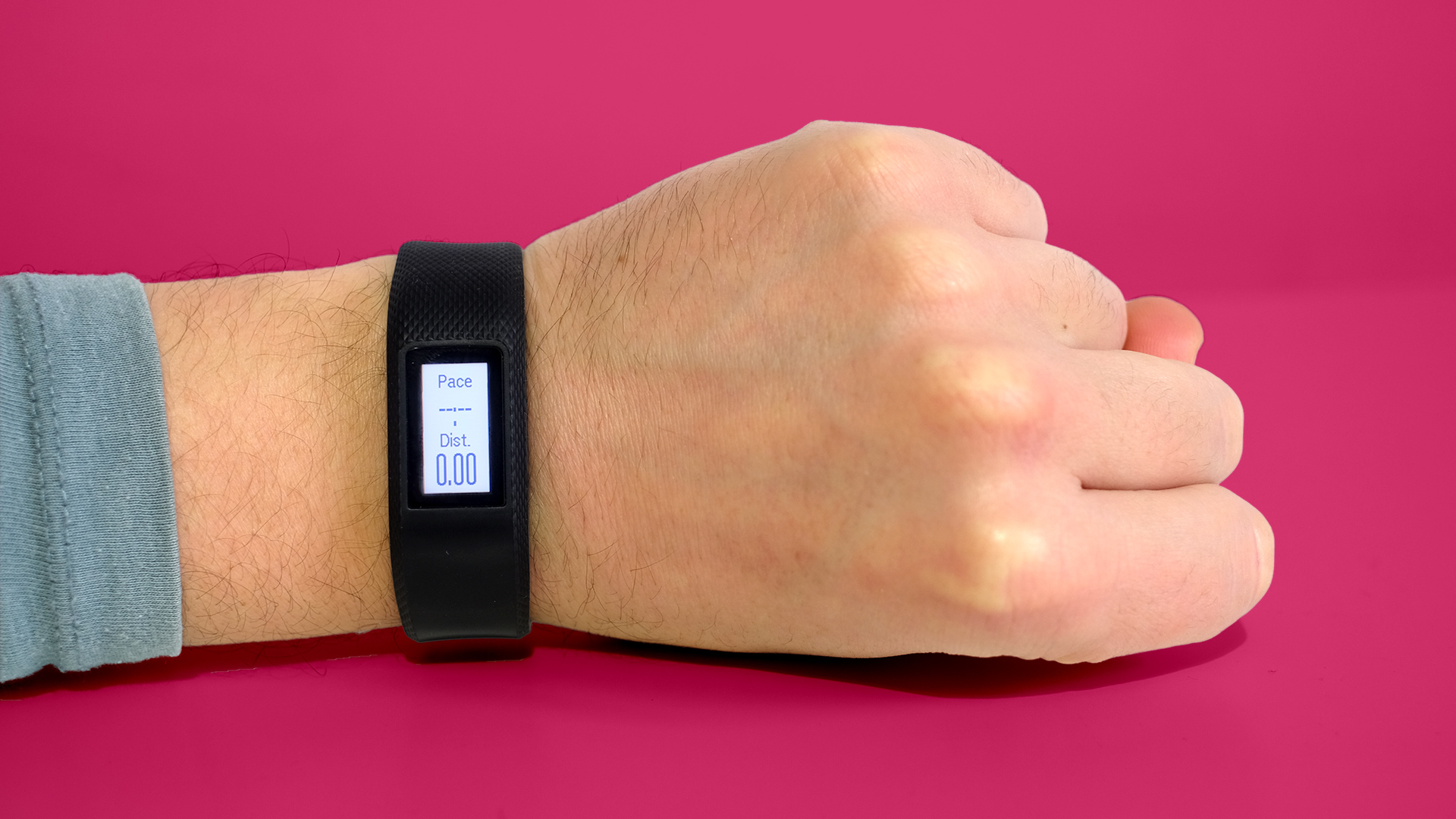Why you can trust TechRadar
Battery life
- Lasts around 3.5 days of mixed use
- Easy to charge
Garmin’s official line on the Vivosport is that it’ll last for up to seven days as a standard fitness tracker, or for eight hours of GPS. This is actually similar to the longevity of Garmin’s entry-level runner’s watches. And it’s enough to track a marathon. Or two, if you’re fast.
We’ve obviously been using the Vivosport in a more realistic “mixed” way, as both a watch and a GPS run/walk tracker.
With around an hour of GPS tracking a day, the battery lasted around 3.5 days. This is roughly in line with Garmin’s own claims. If you run, say, 5km 2-3 times a week, and don’t track any walks besides, you should be able to get the Vivosport to last most of that week between recharges.
When the time comes, all you need to do is plug the supplied cable into a little port on the back to replenish the battery.
Interface and app
- Simple interface
- Supports phone notifications
- Stat-packed app
The Vivosport is pretty easy to use once you learn the couple of gestures on which navigation relies. A primer: a long press for the activity menu, then the occasional double tap to stop activities. This double tap is the one part we’ve found a bit fiddly.
Sometimes the screen just doesn’t seem to register double taps, forcing you to try again repeatedly at the end of a run. This aside, the touchscreen and interface feel very responsive for a low-power fitness tracker.
The home screens above and below the clock face are quick to flick through, making the Vivosport fairly fun to use day-to-day.
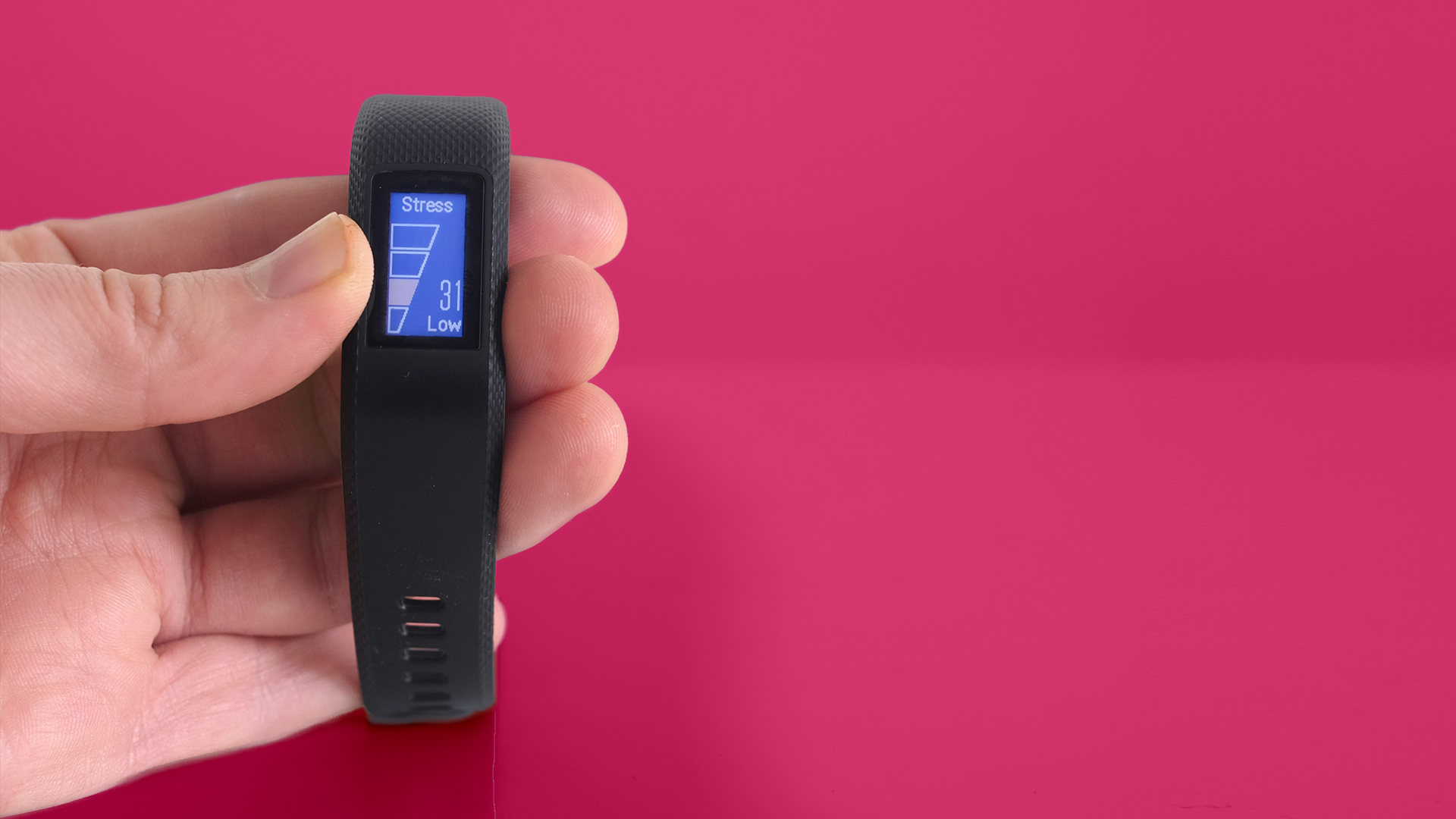
These extra home screens show you your daily steps/activity level, your heart rate and your stress level, judged by measuring heart rate variability. They also offer what small smartwatch capability the Vivosport has.
The stress reporting is something we found a bit, well, stressful when reviewing it on the Garmin Forerunner 935 - it doesn't just drop with a moment's relaxation, rather showing when things are getting harder and bringing the need to drop your stressful situations a little.
It's more a prompt than something you can do about in the short term - but that feels pretty comprehensive as an idea.
You can get a weather report, control your phone’s music and receive phone notifications. This includes ones from apps like WhatsApp as well as just calls and texts.
We’ve found the watch/phone connection less reliable than the Vivoactive 3 or an Android Wear watch. And you can’t read long messages or email excerpts. But it’s still an important feature less developed in some rivals, which often either only have SMS/call notifications, or none at all.
Unlike a higher-end Garmin watch you can’t fine-tune the notifications you receive, though. It’s either everything or just calls. Or nothing.
This is because the Vivosport does not use the Connect IQ software that watches like the Vivoactive 3 have. Such devices are a bit smarter and support third-party apps, where this band offers what Garmin has made, that’s it.
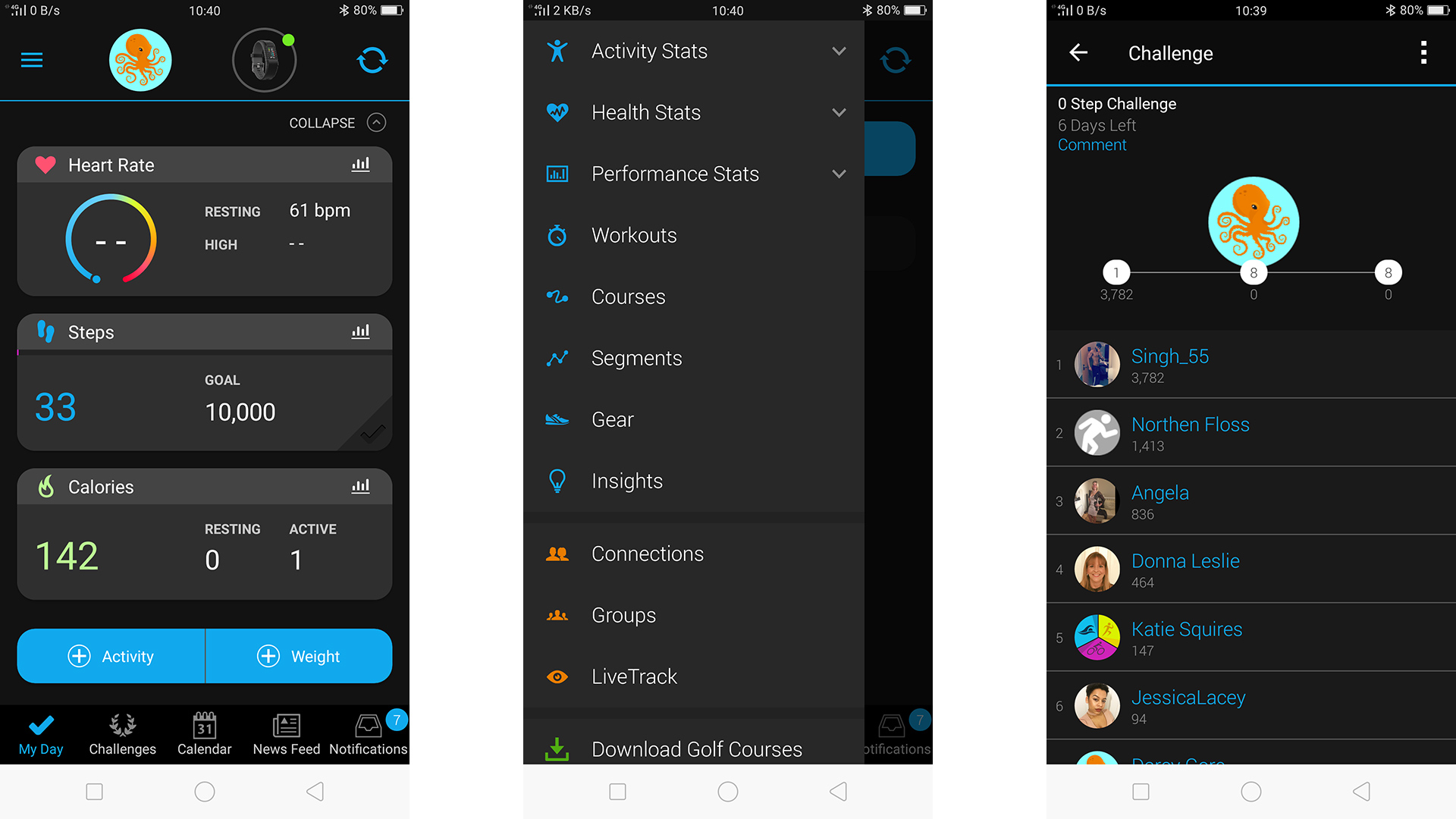
However, you do get to choose between eight watch faces, all of which can be shown in portrait or landscape.
Then there’s the app, Garmin Connect. Until recently this was just about the most unfriendly app made for “fun” fitness bands, because it was really geared towards people buying Garmin Forerunner watches. That’s a lot of people who run marathons.
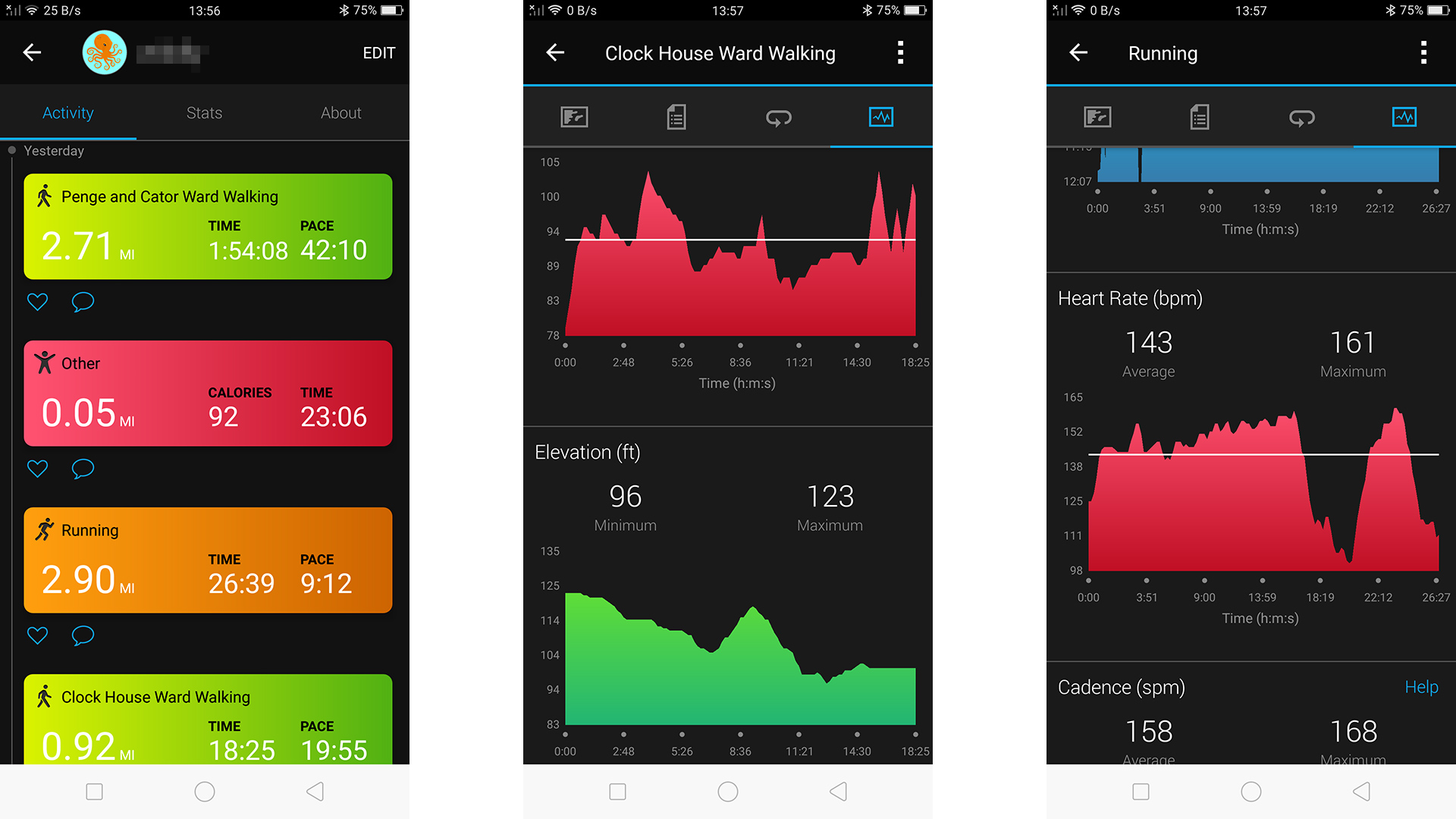
Now there’s a glossy, colorful front page to Garmin Connect that lets you avoid tripping over, and drowning in, fitness stats. It shows your daily steps, resting and high heart rate for the day and the stats from your most recent activity.
Behind this friendly veneer there are still all the stats that Garmin users love (or hate), and it’s just as intimidating as ever. Get this: Garmin Connect even has a section that lets you log your shoes to track how long they last before being binned. Madness to some, genius to others.
This isn’t Fitbit, but it isn’t meant to be either.
Verdict
The Garmin Vivosport isn’t the prettiest fitness band. It’s not the smartest either. Or the cheapest. However, it is one of the smallest, making it most convenient for those who want GPS runner’s watch chops without the bulk.
Who's this for?
The Vivosport is for people who want a tracker that looks like a simple Fitbit-style tracker band, but is actually a full GPS tracker.
This is one of the smallest devices that can provide you with data deep or reliable enough to improve marathon training. If you let stats inform your motivation or technique, at any rate.
Should you buy it?
If you find a deal on the older Vivoactive HR or the Vivoactive 3, they are more interesting devices. They support more activities, and have slightly better smart features.
However, in its own class the Vivosport is one of the best options if you don’t demand a swish look. And its improvements over the Vivosmart HR, especially the color screen, are worth having.
The Garmin Vivosport is a generally strong tracker, but there are alternatives, such as the following three.
Fitbit Surge
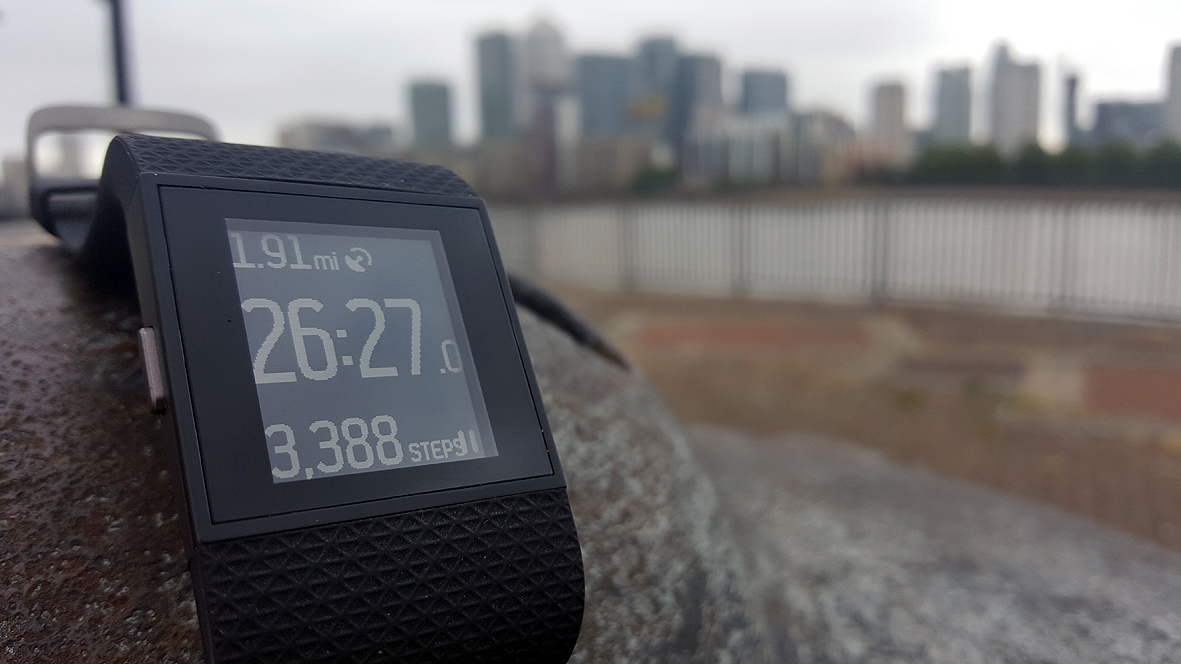
Fitbit’s line of mid-range trackers either have no GPS at all or rely on “connected GPS”, which is where the band leeches off your phone’s GPS. The entry-level option with true GPS is the Fitbit Surge.
It’s a neat watch, but looks extremely chunky next to the Vivosport. Its display is black and white too. This is one to buy if you find it on sale, but these days it’s showing its age.
Read our Fitbit Surge review
TomTom Spark 3
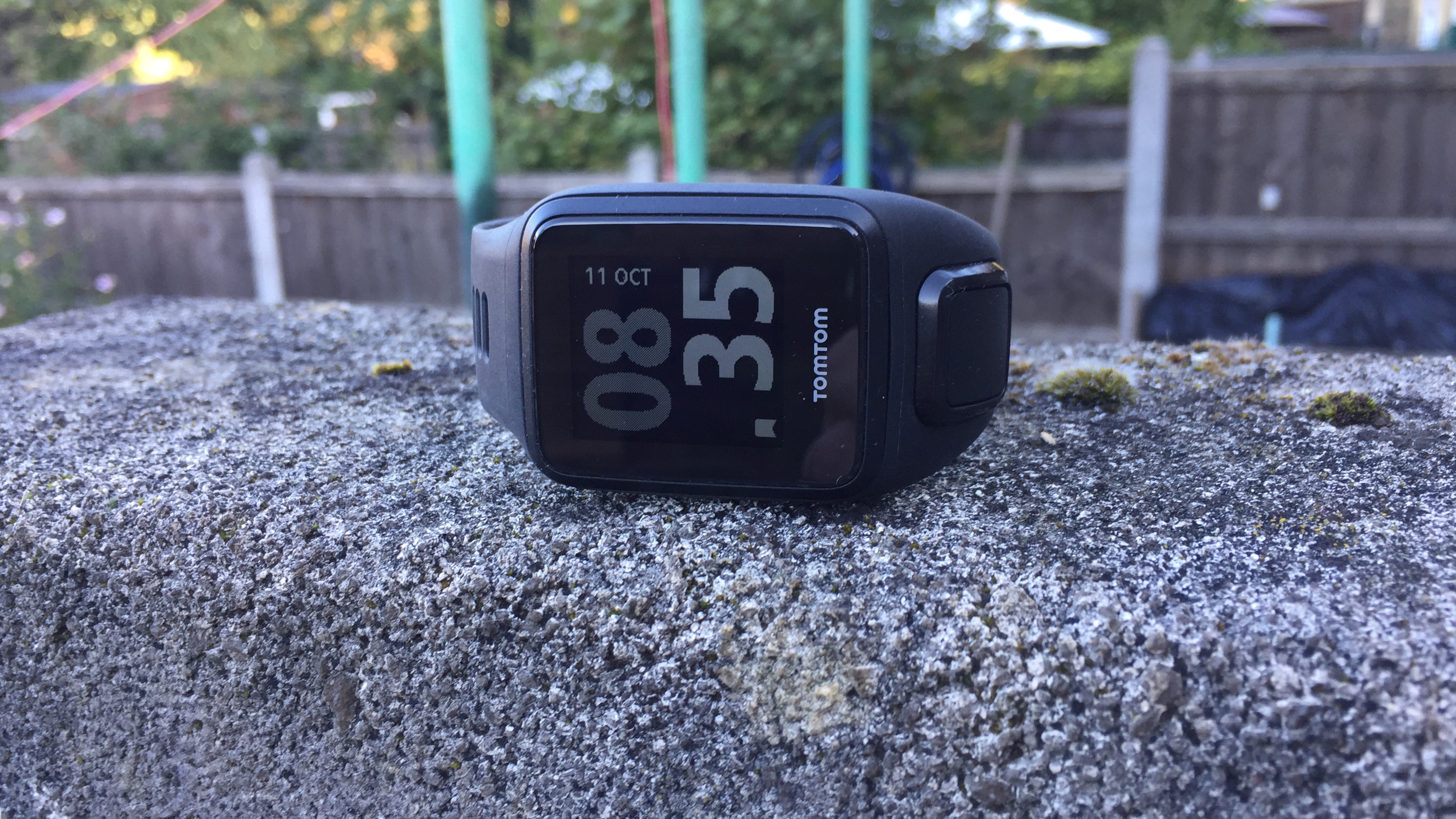
If you don’t mind switching to a larger watch-like design, the TomTom Spark 3 and its very similar sibling the TomTom Runner 3 are worth considering. It’s slightly cheaper than the Vivosport, and the top-end spec of this watch also offers local music playback.
Perhaps thanks to the larger design, battery life is a bit better. However, the Vivosport is actually smarter, supporting notifications.
Read our TomTom Spark 3 review
Samsung Gear Fit 2 Pro
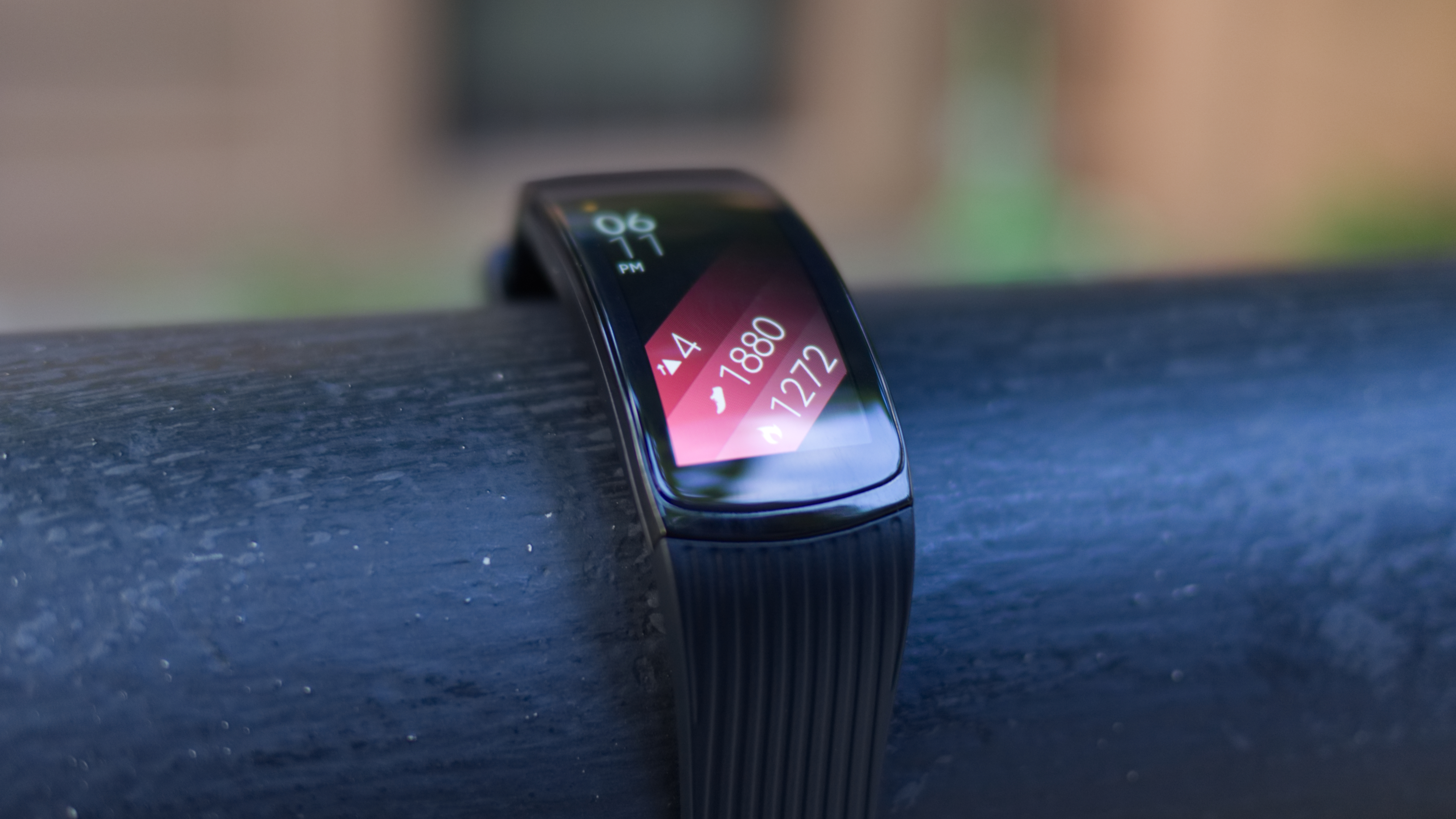
The smarter alternative to the Vivosport is the Samsung Gear Fit 2 Pro. It has apps, a much fancier AMOLED screen and a more built-up interface. And it has a proper swim tracking mode, which is welcome.
However, it’s more expensive, and notably more expensive than its predecessor the Gear Fit 2, which is also worth considering.
Read our Samsung Gear Fit 2 Pro review
First reviewed: December 2017
- 1
- 2
Current page: Battery life, interface, app and verdict
Prev Page Introduction, design and fitnessAndrew is a freelance journalist and has been writing and editing for some of the UK's top tech and lifestyle publications including TrustedReviews, Stuff, T3, TechRadar, Lifehacker and others.
